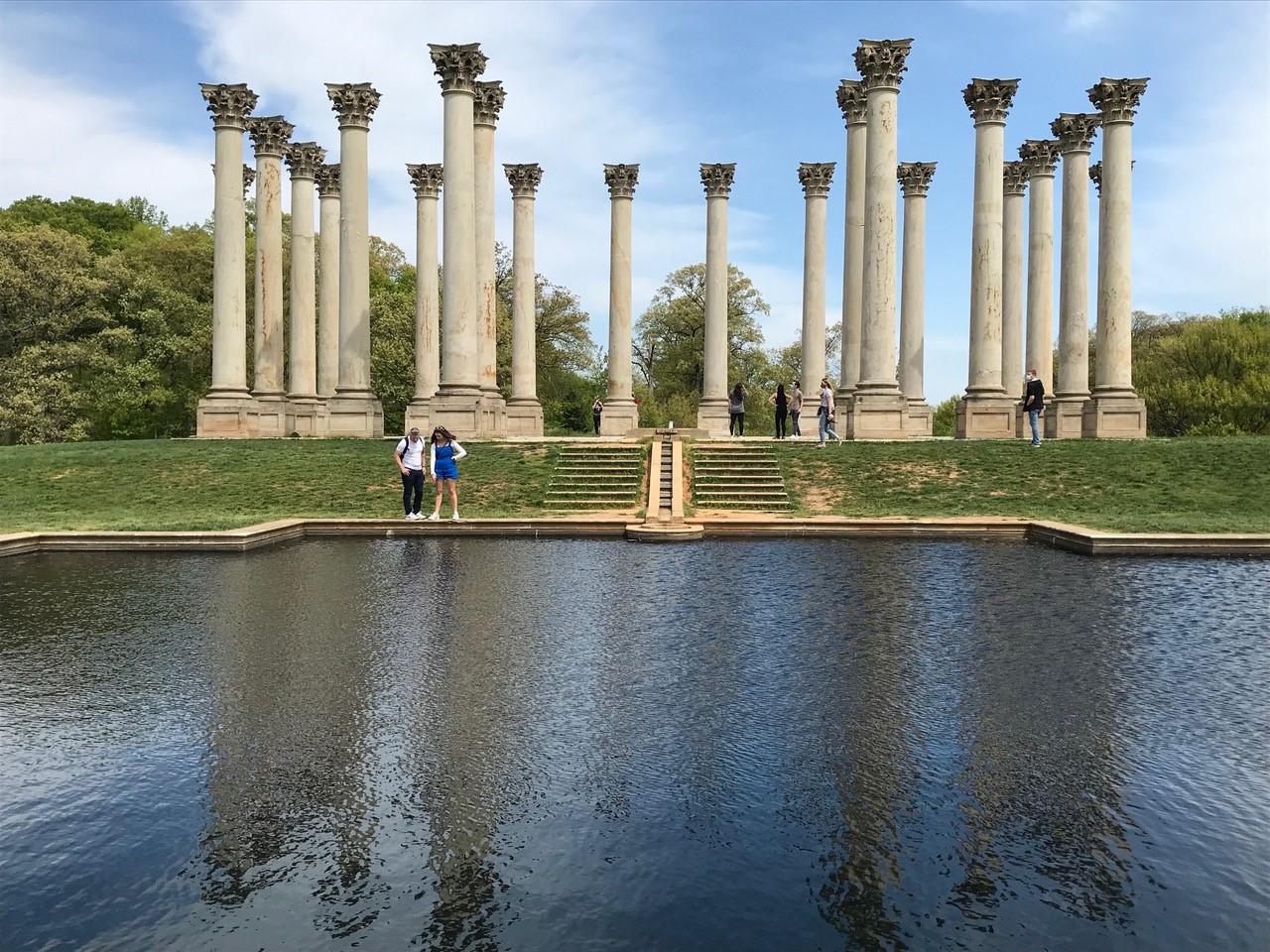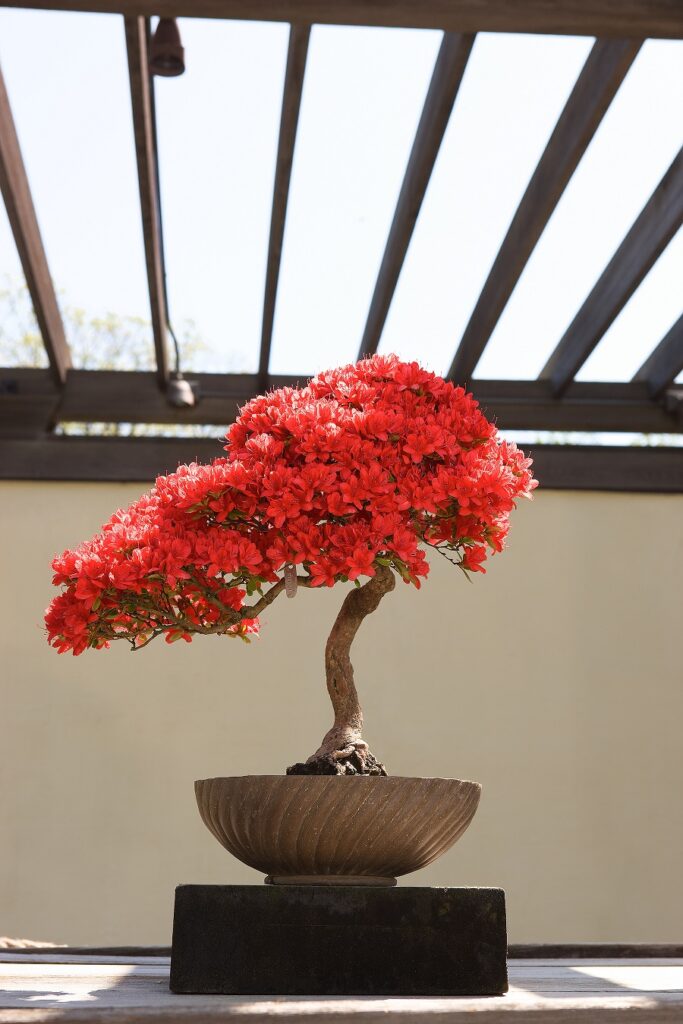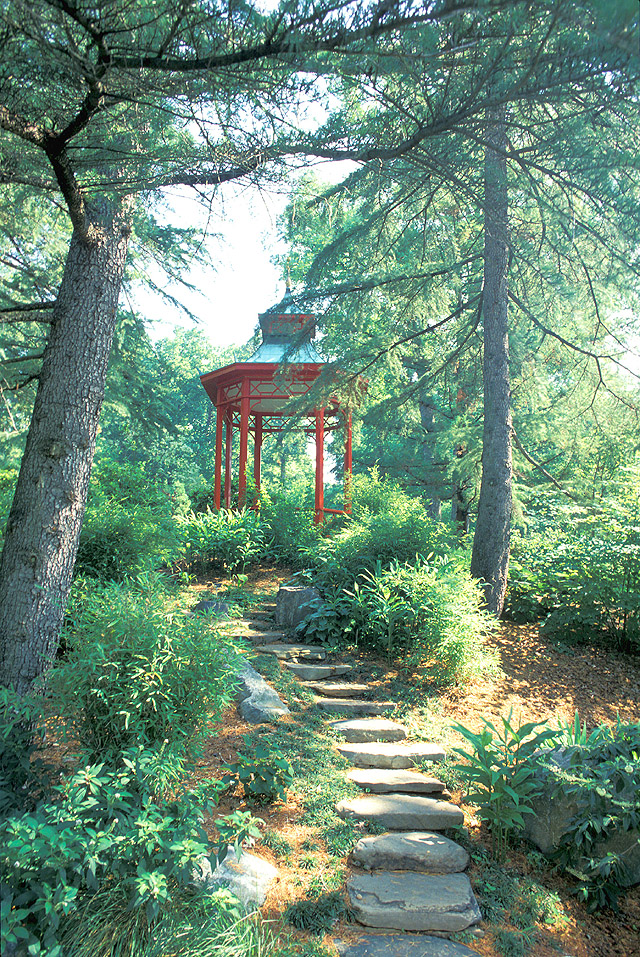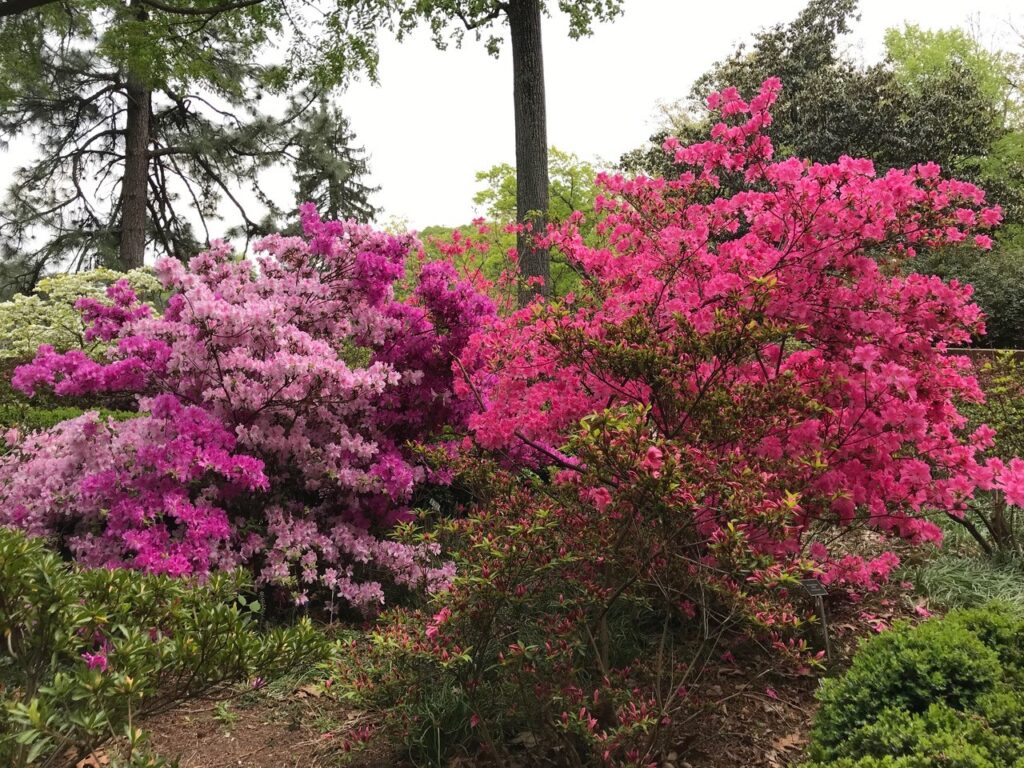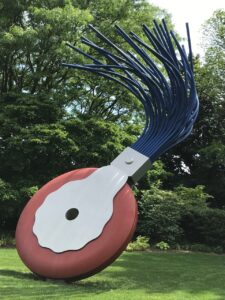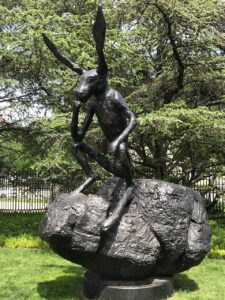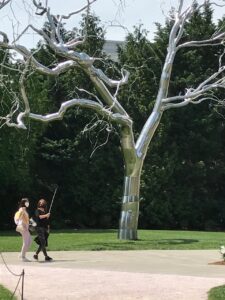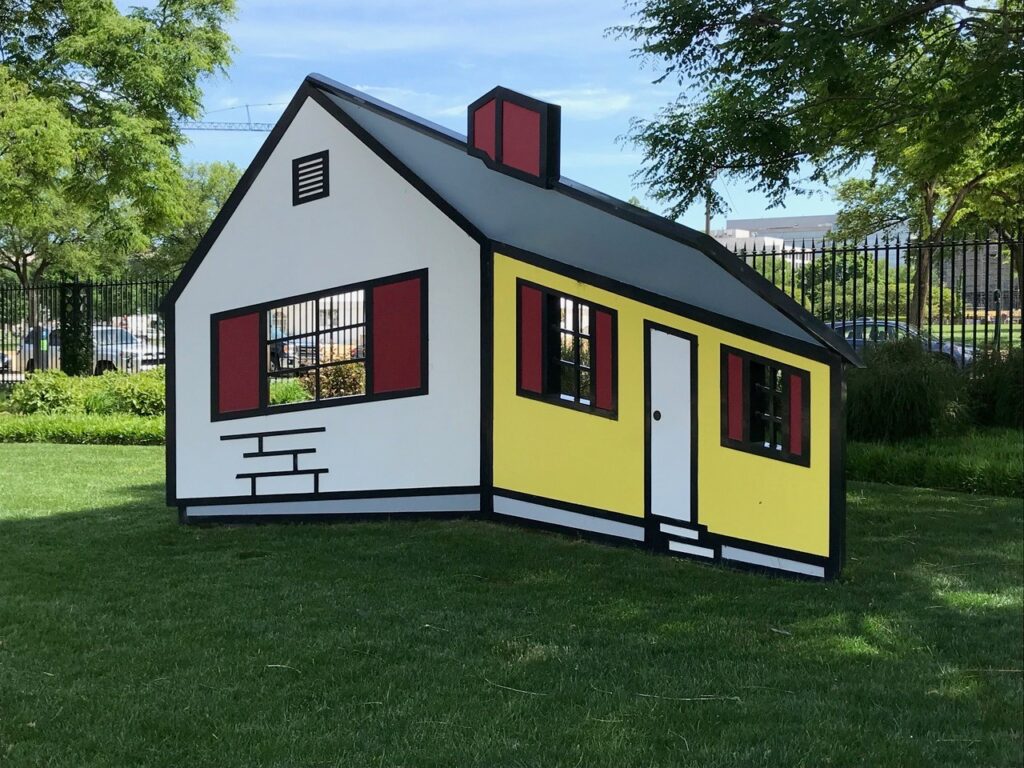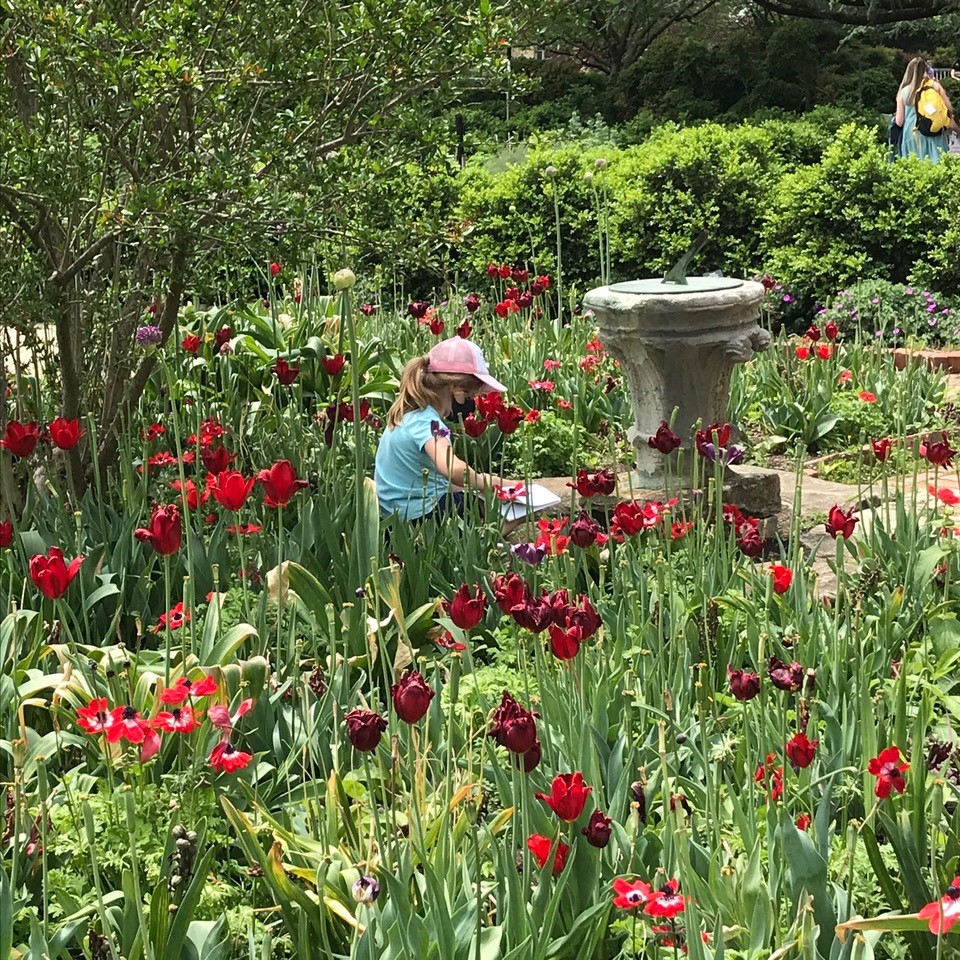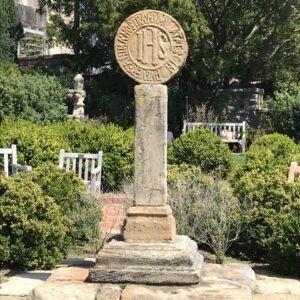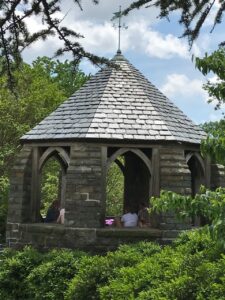Washington D.C. is famous for its springtime flowering cherry trees. But blossoming trees are not limited to the cherries, and are not the city’s sole spring and summer outdoor enchantments. Consider three public gardens, vital oases of beauty. The works of art and living culture they contain benefit the city and the millions of tourists who visit each year, especially during the time when indoor museums and other institutions have been closed. Admission to all three gardens is free.
The United States National Arboretum
Like the ruins of an ancient Greek temple, the tall white columns rise on the hill overlooking trees and meadows. But this is not a Greek temple; the 22 elegant Corinthian sandstone columns in the United States National Arboretum (“Arboretum”) were designed in 1828 to be part of the East Portico of the United States Capitol Building. But when the iron dome of the Capitol was completed, its weight was too heavy for the columns. They were eventually moved to the Arboretum beside a shallow reflecting pool.
The 446 magnificent acres of the Arboretum contain plants, shrubs, flowers, herbs and a multitude of trees, cared for by the U.S. Department of Agriculture’s Research Service. The Arboretum conducts long-range research on issues related to ornamental horticulture. The grounds offer numerous walking paths amid trees and flowers.
Each season presents a different flowering tree and/or plant. April is spring’s most glorious month with cherry trees and dogwoods in full bloom. (The 3020 flowering cherry trees located around the Tidal Basin, were a 1912 gift of friendship from the people of Japan to the people of the United States.) Spring is also the time when the azaleas show off their brilliant pink, red, lavender and white splendor. The summer brings roses and crape myrtles. The foliage of the maples turns red, yellow and orange in the autumn, and the year ends with bright red berries on the holly.
The National Grove of State Trees contains 41 varieties of trees selected by the 50 states and the District of Columbia as their arboreal symbols. Included are oaks, magnolias, dogwoods, redbuds, pines, buckeyes, maples and pecans.
The largest designed herb garden in the United States is in the Arboretum. It consists of four areas emphasizing different aspects of the herbal plant world.
The Arboretum’s Asian Collection is a peaceful area of hill and valley sloping down to the Anacostia River, providing dramatic views and unique plants. A Chinese pagoda-style gazebo overlooks the valley.
Perhaps the most fascinating aspect of the Arboretum is its National Bonsai and Benjing Museum. Bonsai means “planted in a container” in Japanese, and is the term used for making miniature sculptures of living trees. Penjing is the Chinese word for bonsai. The styles differ: the Japanese bonsai are formal, while the Chinese trees are more free-style. Among the museum’s collection is a 390 year old Japanese white pine which survived the atomic bombing of Hiroshima in 1945. (The Bonsai Collection and Museum are temporarily closed due to the pandemic.)
The National Arboretum, (3501 New York Ave, NE) is open daily from 8 a.m. to 5 p.m. There are no food facilities in the Arboretum. Nearby is one of Washington’s best Chinese restaurants: Panda Gourmet (2700 New York Avenue, 202-636-3588, located in a Days Inn).
The National Gallery of Art Sculpture Garden
Located on the Mall in the heart of the city, between the National Gallery of Art and the National Museum of Natural History, the National Gallery’s Sculpture Garden is a visual delight, open since May, 1999. Designed as a series of outdoor “rooms,” the Garden exhibits some of the Gallery’s finest sculptures. American trees, shrubs, and ground covers create a frame for each “room.” In the center is a large pool surrounded by stone benches. From December to March, the pool becomes an ice skating rink.
Ordinarily, a free jazz concert takes place in the Garden on summer Friday afternoons. The concerts were cancelled in 2020; the decision whether to hold the concerts this summer has not yet been made.
The art works run the gamut from a Belle Epoque Paris metro sign to the “Six Part Seating” blocks by Scott Burton. A sign identifying the Burton blocks invites visitors to sit on them, an invitation children can’t resist. The 1902 art nouveau “Metropolitain” entrance to the Paris metro serves as the gateway to one of the Pavilion Cafe’s outdoor seating areas.
The Garden contains a charming small mosaic by Marc Chagall, but most of the sculptures date from the decade when the Garden was inaugurated. Roxy Paine’s “Graft” is a graceful, leafless tree, its trunk and branches made of stainless steel which shine like silver in the afternoon sunlight. One set of branches appears orderly while the other seems twisted.
Pop artist Roy Lichtenstein’s lopsided “House 1,” is a three-dimensional grid of color, its walls and windows etched in black. The house is described on the identifying plaque as “at once project[ing] toward the viewer while appearing to recede into space.”
“Thinker on a Rock” by Barry Flanagan is a bronze sculpture of a giant hare, a witty tribute to Rodin’s famous “Thinker.” Alexander Calder’s bright red outdoor stabile, “Cheval Rouge” (Red Horse), prances on the grass not far from where David Smith’s welded steel “Cubi XXVI” appears to be striding purposefully. The National Gallery’s West Wing serves as the background for Sol LeWitt’s elegant “Four-Sided Pyramid.”
Other works include one of Louise Bourgeois’s giant spiders, Juan Miro’s haunting “Gothic Personnage Bird-Flash,” Mark di Suvero’s imposing “Aurora,” and Claes Oldenburg and Coosje van Bruggen’s iconic “Typewriter Eraser.”
The Pavilion Café in the Garden serves light fare and drinks, including wine and beer. Outdoor seating is particularly pleasant under large umbrellas near the works of art. The Garden and the Café (Constitution Ave. and 7th St. NW) are open daily from 11 a.m. to 4 p.m.
The Bishop’s Garden
The Gothic style Episcopal National Cathedral rises atop a small hill in residential northwest Washington. The Bishop’s Garden is an intimate, terraced space within the grounds of the cathedral. In the 1920s, Frederick Law Olmstead designed a walled medieval garden for the bishop’s exclusive use. Over the years, the garden gradually became a public park. The plants relate to biblical and Christian legends and include plants native to the area.
The main entrance is through the Norman Gate on the north wall of the garden. Narrow paths meander down a gentle slope, inviting a visitor to stop and smell the flowers in the rose garden.
Tucked among the plantings, which are replaced from time to time depending on the changing climate, are small sculptures, wall reliefs and other objects. The wall reliefs are from the collection of George Grey Barnard, an American sculptor with an interest in medieval art. He gathered discarded fragments of medieval architecture, including a large wayside cross dating from early Christian pilgrimages, from French villages before World War I.
The 15th century French bas reliefs are situated on the garden’s outer walls. A bas relief on the wall of the open Norman Court depicts the crucifixion of Christ with Mary and John on either side.
St. Catherine’s pool, shaped like a primitive cross, is surrounded by wild flowers and filled with sleepy goldfish, protected by a sign requesting visitors not to interfere with them. St. Catherine, holding the wheel associated with her torture, and three other figures are depicted in the bas relief on the wall behind the pool. Another panel in the same wall depicts a kneeling female figure with hands clasped in front of her chest.
The Shadow House is an eight-sided stone gazebo with views of the garden through arched windows. A bench runs around the inside of the gazebo — a pleasant spot in which to picnic and enjoy views of the garden. A small bronze statue of the baby Pan blowing his pipe sits outside the entrance. Shadow House was built with stones and timber recovered from President Grover Cleveland’s nearby summer home, demolished in 1927.
A Carolingian-era baptismal font, attributed to the time of Charlemagne, graces the Hortulus, or mini garden.
An 18th century English bronze sundial rests atop a 13th century Gothic column capital of limestone, discovered in monastery ruins near Rheims Cathedral in France. A finial, which fell from the south tower of the cathedral in the 2011 Washington earthquake, could not be repaired and found a new home in the north end of the Garden. In the bottom of the Garden, German-American sculptor Heinz Warneke’s “Prodigal Son” resides beneath a weeping cherry tree. An amphitheater used for concerts and other performances lies below the garden in a forested area.
A unique experience — when it again becomes available – is the Tea and Tour offered in the St. Paul Room of the cathedral’s south tower, Washington’s highest tea room.
The Open City Café, located on the cathedral grounds, is currently closed due to the pandemic. There are several restaurants nearby, including The 2 Amys (3715 Macomb St. NW, 292-885-5700) serving some of the best pizzas in town, and La Piquette (3714 Macomb St. NW, 202-686-2015) an excellent, informal French bistro. The Bishop’s Garden (3101 Wisconsin Ave. NW) is open from dawn to dusk.
Corinna Lothar is a Washington D.C. writer, critic and lawyer. She has traveled all over the world, wiring about food, travel and culture.

